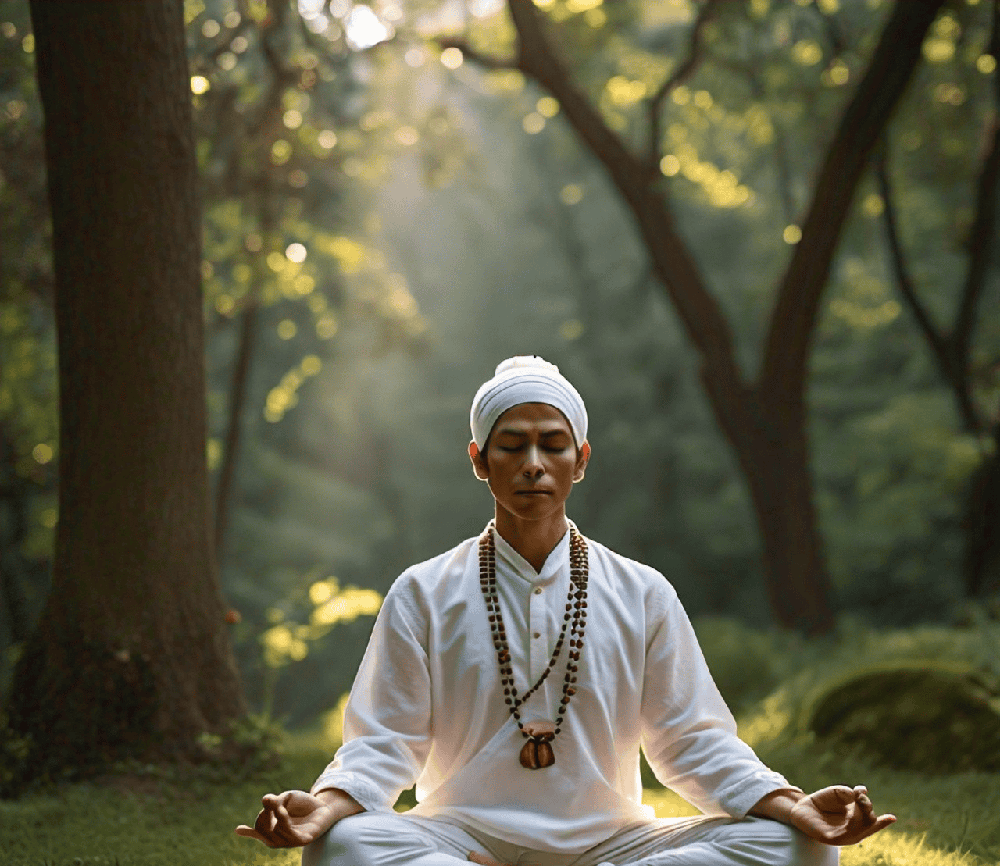Overview
As a yoga practitioner and teacher, I have personally experienced the transformative power of Kundalini yoga. This ancient practice has not only enhanced my physical well-being but has also profoundly impacted my mental, emotional, and spiritual growth. Through regular practice, I have witnessed a shift in my overall energy levels, mood, and sense of purpose. Kundalini yoga has helped me cultivate a deeper connection with myself and the world around me, fostering a greater sense of inner peace and clarity. As I continue to explore the depths of this practice, I am constantly amazed by its ability to unlock hidden potential and facilitate personal transformation. It is my sincere hope that through this guide, others will be inspired to embark on their own Kundalini yoga journey and experience the numerous benefits it has to offer.
Introduction
Kundalini yoga is a transformative practice that combines movement, breath, and meditation to awaken the dormant energy at the base of the spine. This ancient yogic tradition, rooted in the Sikh Dharma lineage, has gained popularity in recent years for its ability to facilitate profound personal growth and spiritual awakening. Unlike other forms of yoga that focus primarily on physical postures, Kundalini yoga incorporates a unique blend of asanas, pranayama, mantra, and meditation to create a holistic practice that addresses the mind, body, and spirit. As a beginner, embarking on this journey may seem daunting, but with the right guidance and an open mind, you can unlock the immense potential of your Kundalini energy and experience the numerous benefits that this practice has to offer. In this comprehensive guide, we will explore the history and philosophy of Kundalini yoga, delve into the anatomy of the chakras, and guide you through a series of beginner-friendly poses, breathing techniques, and meditations to help you start your journey towards self-discovery and spiritual growth.
Understanding Kundalini Yoga
What is Kundalini Yoga?
Kundalini yoga is a dynamic and powerful form of yoga that focuses on awakening the Kundalini energy, which is believed to be coiled at the base of the spine. This energy, often symbolized as a serpent, is thought to be the source of our spiritual and creative potential. By practicing Kundalini yoga, practitioners aim to raise this energy through the seven chakras, promoting physical, mental, and spiritual well-being.
The History and Philosophy of Kundalini Yoga
Kundalini yoga has its roots in the Sikh Dharma tradition, with its origins traced back to the 15th century Sikh Guru, Guru Nanak. However, the practice itself is believed to be much older, with references to Kundalini energy found in ancient Hindu and yogic texts. The philosophy of Kundalini yoga emphasizes the importance of self-awareness, personal growth, and the attainment of higher consciousness through the practice of yoga, meditation, and spiritual discipline.
The Role of Chakras in Kundalini Yoga
Chakras are energy centers in the body that correspond to various aspects of our physical, emotional, and spiritual well-being. In Kundalini yoga, the seven main chakras are believed to play a crucial role in the flow of energy. By practicing specific kriyas (sets of poses, breathwork, and meditation) that target each chakra, practitioners can clear blockages and promote a balanced flow of energy throughout the body.
Kundalini Yoga for Beginners
Preparing for Your Practice
Before beginning your Kundalini yoga practice, it's essential to create a dedicated space that is clean, quiet, and free from distractions. Wear comfortable, loose-fitting clothing that allows for easy movement. It's also recommended to practice on an empty stomach or at least two hours after a light meal.
Foundational Poses (Asanas)
Kundalini yoga incorporates a variety of poses that are designed to open the body and promote the flow of energy. Some of the most common and beginner-friendly poses include:
- Easy Pose (Sukhasana)
- Child's Pose (Balasana)
- Cobra Pose (Bhujangasana)
- Camel Pose (Ustrasana)
- Spinal Flex (Ardha Matsyendrasana)
Breathing Techniques (Pranayama)
Breath control, or pranayama, is a crucial aspect of Kundalini yoga. By practicing specific breathing techniques, practitioners can regulate the flow of prana (life force energy) and promote a state of calm and focus. Some of the most commonly used pranayama in Kundalini yoga include:
- Breath of Fire (Kapalabhati)
- Long Deep Breathing
- Alternate Nostril Breathing (Nadi Shodhana)
Meditation and Mantra
Meditation and the use of mantra are integral parts of Kundalini yoga. By chanting specific mantras and engaging in meditation, practitioners can quiet the mind, promote inner peace, and enhance their connection to the divine. Some popular mantras used in Kundalini yoga include:
- Sat Nam (Truth is my identity)
- Wahe Guru (Wonderful teacher)
- Ong Namo Guru Dev Namo (I bow to the divine teacher within)
Kriyas and Mudras
Kriyas are sets of poses, breathwork, and meditation that target specific aspects of the body and mind. Each kriya is designed to address a particular issue or promote a specific outcome, such as stress reduction, emotional healing, or spiritual growth. Mudras, or hand gestures, are often incorporated into kriyas to channel energy and enhance the practice.
Benefits of Kundalini Yoga
Kundalini yoga offers a wide range of physical, mental, and spiritual benefits. Some of the most notable benefits include:
- Stress reduction and improved mental well-being
- Enhanced physical strength and flexibility
- Improved respiratory function and lung capacity
- Increased self-awareness and emotional intelligence
- Promotion of spiritual growth and connection to the divine
- Balancing of the endocrine system and improved hormonal function
- Boosting of the immune system and overall health
Alternative Practices to Complement Kundalini Yoga
While Kundalini yoga is a comprehensive practice in itself, incorporating other complementary practices can deepen your experience and promote further growth. Some alternative practices that can be combined with Kundalini yoga include:
- Ayurvedic medicine and dietary practices
- Crystal healing and the use of gemstones
- Reiki and other forms of energy healing
- Journaling and creative expression
- Nature immersion and outdoor activities
Conclusion
Kundalini yoga is a powerful practice that has the potential to transform your life on multiple levels. By awakening the Kundalini energy and promoting a balanced flow of energy through the chakras, practitioners can experience profound physical, mental, and spiritual benefits. As a beginner, it's important to approach the practice with an open mind, patience, and a willingness to explore the depths of your inner world. Remember that the journey of self-discovery is a lifelong process, and Kundalini yoga provides a supportive framework for growth and transformation. Embrace the practice, trust the process, and allow the energy of Kundalini to guide you towards a more fulfilling and enlightened existence.
Action
Are you ready to embark on a transformative journey through Kundalini yoga? Join our community of like-minded individuals who are dedicated to unlocking their inner potential and experiencing the numerous benefits of this ancient practice. Whether you are a complete beginner or have some experience with yoga, our classes and workshops cater to all levels, providing a safe and supportive environment for growth and exploration. Take the first step towards self-discovery by signing up for our beginner's Kundalini yoga workshop today. Experience the power of Kundalini energy firsthand and witness the positive changes it can bring to your life. Don't wait any longer; start your journey towards a more balanced, fulfilling, and spiritually-enriched existence through the practice of Kundalini yoga.






